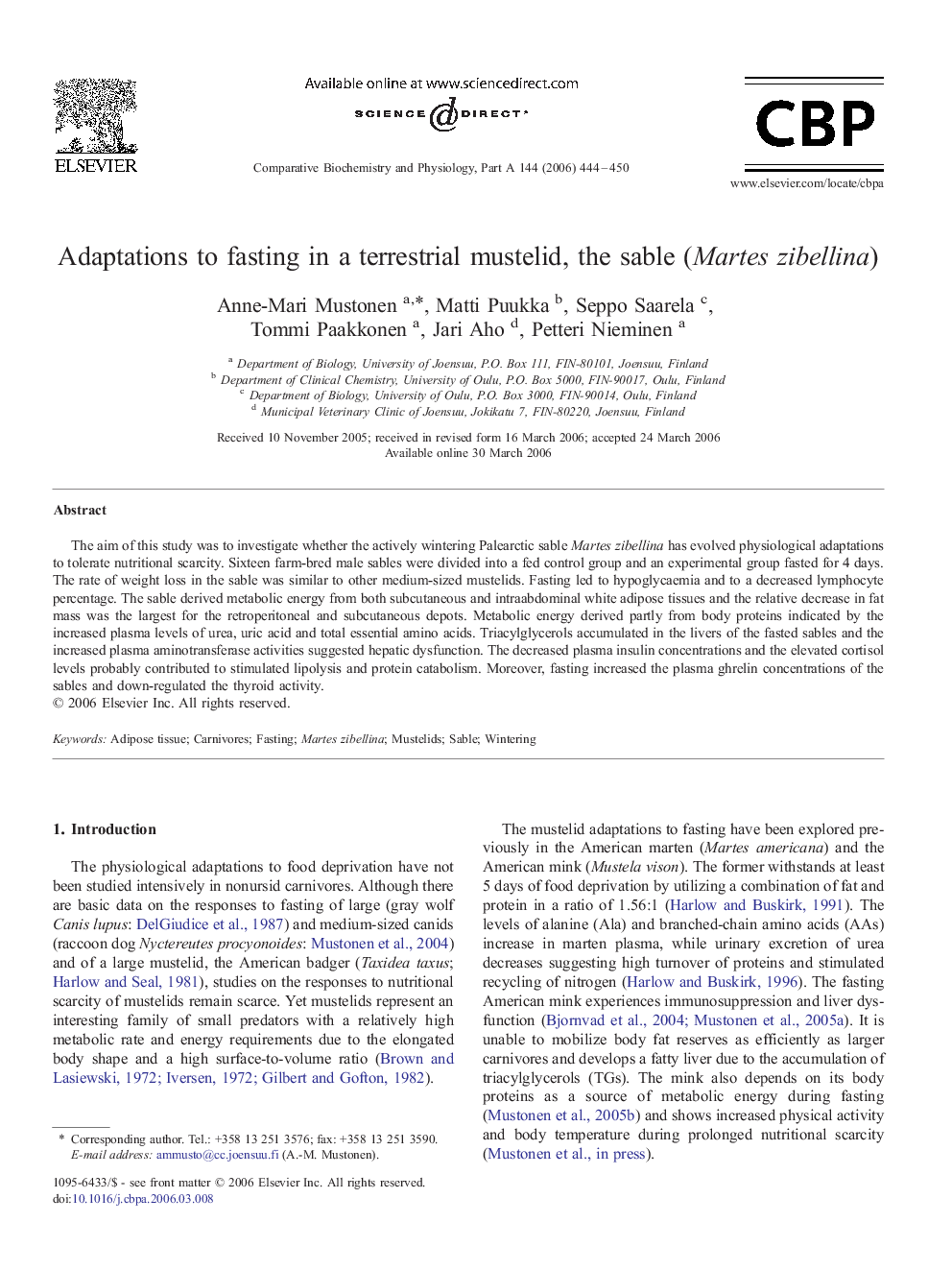| Article ID | Journal | Published Year | Pages | File Type |
|---|---|---|---|---|
| 1973618 | Comparative Biochemistry and Physiology Part A: Molecular & Integrative Physiology | 2006 | 7 Pages |
Abstract
The aim of this study was to investigate whether the actively wintering Palearctic sable Martes zibellina has evolved physiological adaptations to tolerate nutritional scarcity. Sixteen farm-bred male sables were divided into a fed control group and an experimental group fasted for 4Â days. The rate of weight loss in the sable was similar to other medium-sized mustelids. Fasting led to hypoglycaemia and to a decreased lymphocyte percentage. The sable derived metabolic energy from both subcutaneous and intraabdominal white adipose tissues and the relative decrease in fat mass was the largest for the retroperitoneal and subcutaneous depots. Metabolic energy derived partly from body proteins indicated by the increased plasma levels of urea, uric acid and total essential amino acids. Triacylglycerols accumulated in the livers of the fasted sables and the increased plasma aminotransferase activities suggested hepatic dysfunction. The decreased plasma insulin concentrations and the elevated cortisol levels probably contributed to stimulated lipolysis and protein catabolism. Moreover, fasting increased the plasma ghrelin concentrations of the sables and down-regulated the thyroid activity.
Related Topics
Life Sciences
Biochemistry, Genetics and Molecular Biology
Biochemistry
Authors
Anne-Mari Mustonen, Matti Puukka, Seppo Saarela, Tommi Paakkonen, Jari Aho, Petteri Nieminen,
